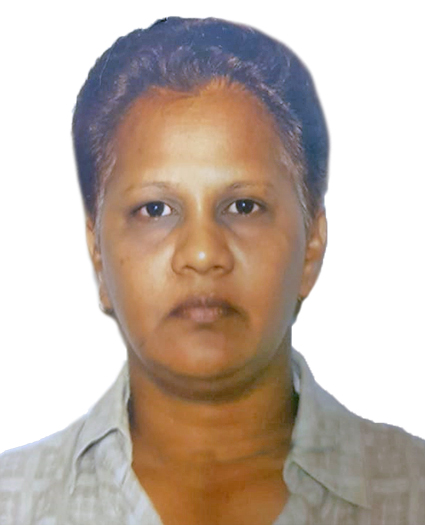Guyana Focus
At what cost?

Guyana’s plans to establish a completely green economy within the next decade is not only an exercise in futility but also an expensive proposition.
As commendable as the idea might appear in an effort to gain political mileage at home and abroad, the country hopes to achieve what no other country has achieved – even though it is a late starter in the green energy space.
In fact, though somewhat dated, it is interesting to note that World Bank Statistics show that Guyana’s
renewable energy consumption as a percentage of total energy consumption fell dramatically from 42.23% in 1990 to 25.26% in 2015 – which indicates that the country is heading backwards – and not moving forward – in attaining its renewable energy goals, Arguably, statistics on renewable energy vary widely across reporting institutions, leading to credibility issues, but by no stretch of imagination can Guyana meet its planned target. The country’s President, David Granger hopes to reduce dependency on fossil fuels for energy generation by achieving close to 100% renewables by 2025 through a diversified renewable energy infrastructure, including biomass, solar, wind and hydropower; and accomplish a green economy by 2030 in keeping with the Framework for its Green State Development Strategy under which “Energy – Transition to Renewable Energy and Greater Energy Independence” is one of seven central themes.
The truth is, even developed countries like the UK, the USA, Germany and Spain have cut subsidies to renewable energy largely because they create a heavy burden on government finances, weaken the potential for economies to grow, and undermine private and public investment in more efficient forms of energy which are key to their development.
Germany, a pioneer in the renewable energy space and a technology giant, stands out in its failure to meet its renewable energy goals. Despite spending some US$200 billion and decades of political effort to scrap nuclear and fossil fuels and switch to renewables like wind and solar, Germany is expected to fall short of almost all of its national and EU emission reduction and clean energy targets for 2020.
On the other hand, China, once regarded as one of the world’s major polluters, currently leads global growth in renewable energy, stemming from its’ policies to decarbonize all sectors and reduce harmful local air pollution, in the quest to become the largest consumer of renewable energy.
Of the world’s largest energy consumers, Brazil has the highest share of renewables by far – almost 45% of total final energy consumption, driven by significant contribution of bioenergy and hydropower. Ironically, Guyana has a 100% target in under a decade.
There is no doubt that the concept of a green economy is perhaps one of the most relevant discussions in the global development agenda today. However, it is fraught with controversy and challenges. It is a strategy whose architects largely pay lip service to but seek to influence poor countries like Guyana to adopt.
Borrowing from the objectives of the United Nations Environment Program (UNEP), the Guyana government’s green economy is envisioned as one that results in reducing environmental risks, with the goal of attaining sustainable development without degrading the environment.
In the government’s last two budgets, it was announced that its Green Agenda spans social, environmental, and economic sustainability issues and encompasses environmental protection, citizen security, employment and value chain creation, energy, health, education, social protection, and resilience against climate change and economic shocks.
While the government’s objectives are broad, they are largely hinged on green energy. But most green programs, especially in renewable energy, rely on costly government subsidies which Guyana cannot afford. And with the country already balking at subsidizing its current fossil-fuel electricity provider, green initiatives will only add to its burden, unless it is anticipated that potential oil revenues will be used to support the government’s political objective.
At face, it is simplistic to argue that producing green energy from sources such as wind and solar – which are abundant in Guyana – can be cheaper than energy from imported fossil fuels. Incidentally, wind and solar power are considered the most effective and affordable sources of renewable energy. However, hydropower is by far the cheapest source but the environmental and social impact of wind and solar make them more favorable for development globally
But the high capital and infrastructure costs of going green typically offset the economic benefits derived, with lengthy payback periods. Plus there are also ongoing maintenance costs which must be factored into the overall cost equation.
Questions of reliability, efficiency and economies of scale also arise when considering green energy as a viable option.
To highlight the cost of developing green energy, it is useful to draw on the conclusions of a 2012 study done by the Fraser Institute on Ontario’s energy sector. The study found that Ontario residents will pay an average of $285-million more for electricity each year for the next 20 years as a result of subsidies to renewable energy companies.
The study also found that Ontario household power rates will be the second-highest in North America and will continue to accelerate. Even more alarming is the impact on Ontario’s economic competitiveness, as businesses and industrial customers will be hit by almost $12-billion in additional costs over the 20-year period.
The higher cost associated with green energy results from established feed-in-tariffs, ranging from 44.5 cents to 80.2 cents per kilowatt-hour (kWh) for solar power, and 13.5 cents/kWh for wind power. The solar feed-in rates average 11 times the 5.6 cents/kWh paid for nuclear-generated power, and 18 times the 3.5 cents/kWh for hydro-generated power. The wind-power rates are more than twice as high as nuclear, and four times those of hydro.
Incidentally, the cost of going green in Guyana, if its green plan is implemented, will follow a similar pattern as in Ontario.
In recognition of its green goals, the government has outlined a range of initiatives, including the implementation of its Green State Development Plan and various tax measures. It has committed to expand the country’s protected areas by an additional two million hectares by 2020 and allocate additional resources for compliance and monitoring.
It also plans to introduce an environmental levy on the manufacturers and distributors of products that use non-returnable metal, plastic, and glass beverage containers and grant exemptions of customs duties and taxes on several products and services that have a green orientation.
Among the measures that have been implemented are: tax exemptions on the importation of items for wind and solar energy investment; tax exemptions for investment in, and construction of, water treatment and water recycling facilities; tax exemptions for investment in, and construction of waste disposal facilities with particular reference to recycling facilities for plastic items. Businesses involved in these areas would also benefit from a one-off tax holiday of two years on corporation taxes.
As well, the government also announced exemptions of customs duties and taxes on machinery and equipment to setup charging stations for electric vehicles; exemptions of customs duties and taxes on greenhouses and component parts for use in the agricultural sector; lowering of the excise tax on hybrid and electrical vehicles; zero-rate of excise tax on specially-designed garbage trucks and bio-fuel (bio-gas or bio-diesel); restriction on the use of used tyres and a reduction in taxes on new tyres.
So far, the government has allocated more than $1 billion for the public sector to lead the way in implementing a series of renewable energy and energy efficiency projects by installing solar photovoltaic systems on the rooftops of government buildings; and replace all incandescent lighting.
The government also plans to construct large scale solar farms at Mabaruma, Lethem, Bartica and Mahdia; acquire some 5,000 energy efficient street lamps; and conduct further geotechnical studies for the Moco Moco Hydropower Development Project.
Evidently, Guyana’s push to create a green economy is already gaining traction. The government has apparently calculated the hypothetical savings to be derived from the implementation of its green programs. The hinterland regions would certainly be a big beneficiary from alternative energy but it will be necessary to maintain a hybrid energy supply (fossil fuel and green) to sustain efficient operations of most businesses, including state-owned operations which are leading the charge.
For now, the government’s optimism about going completely green is not based on realistic assumptions. In fact, as an emerging major oil producer, Guyana might very well abandon its much touted green initiatives once oil begins to flow around 2020. Then, green would become a mere sideshow as it is currently in many oil producing countries.
Omwattie's husband, Gavin Gill, 31, originally of Whim Village, Corentyne, was arrested in the midst of the carnage, which occurred around 8 am at Tulsie Street, Williamsburg.
The mother of his seven-month-old daughter was on her way to work when she was attacked. Before leaving home, in response to warnings from her mother to beware of her husband, Omwattie had tried to assure her that the man would not do anything to hurt her.
Omwattie’s mother, Tejwattie Jinkoo, also known as “Sharda,” said that her daughter trusted her husband and did not believe he would hurt her.
Jinkoo explained that the couple, who lived together at Port Mourant Village, Corentyne, got married approximately 14 months ago. However, she said that about two weeks ago, her daughter, unable to bear the abuse at the hands of Gill, returned to her [Jinkoo’s] house. According to the woman, her daughter would often cover for Gill but residents of the area would tell her that Gill would physically and verbally abuse Omwattie.
According to an eyewitness, the man used a rented car to hit the woman after which she fell unconscious. He then used a knife to inflict multiple stab wounds about her body, including to her stomach and back, and to slash her face and neck. The man then reportedly grabbed a cutlass from his car and started to chop the woman to her neck.
Jinkoo said Omwattie was very easygoing. Several villagers, who were present at the woman’s house after the carnage, stated that she was a “one of a kind” person, who was very kind and helpful to the residents of the area.

In a release the police said that Milaimi Alli, whose last known addresses were given as Lot 29 Good Hope, East Coast Demerara, Gordon Street, Kitty, and 107-15 110th Richmond Hill, Queens, New York, is wanted for questioning in relation to the murder of Ali which was committed sometime between July 11th and 12th, 2009 at Coldingen, ECD.
Crime Chief Lyndon Alves informed the media on Friday that investigators were searching for Milaimi based on information they had in hand.
Alves had said that several checks had been made for her and noted that it was suspected that she had fled the jurisdiction. Once this is confirmed, he added, local police would contact their counterparts in the relevant jurisdiction for assistance on the way forward.
Police made a breakthrough in the case last week following the arrest of taxi-driver, Saheed Mitchell, a father of three. Mitchell was charged with the crime and remanded to prison.
He is accused of murdering Alli, 45, of Kissoon’s Housing Scheme, Good Hope, between July 11th, 2009 and July 12th, 2009, while being in the company of another. He was not required to plead to the indictable charge.
It is alleged that Mitchell admitted to committing the crime during an interrogation. The prosecution told the court that Mitchell had provided police with a caution statement in which he admitted to killing Alli. He is said to have acted on a woman’s behest.
The prosecution’s case is that on July 11th, 2009, Alli left his home and drove to an unknown destination. On July 12th, his body was found in the trunk of the car.
Police had said in 2009 that Alli was discovered dead with a plastic bag duct taped over his head in the trunk of a rental car along the Coldingen Railway Embankment Road.
Alli had left his home around 9.20 pm on the previous night after receiving a phone call.
After Alli failed to return home, police said, relatives and employees conducted a search on the following morning and found the rented vehicle on the road.
The police were subsequently informed and a search later revealed Alli’s body in the trunk.
At the time, police said robbery did not appear to be a motive behind his murder.

The body of Bhagwandai Deonarine, also known as ‘Deeda’, 69, of Plantation Hope, West Coast Berbice, was discovered on fire in her backyard on Sunday around 8 pm. A large portion of Deonarine’s yard was also discovered destroyed by the fire.
In a press statement issued Monday, the police had indicated that two men were brought in for questioning. Commander of B Division, Paul Langevine, confirmed that one suspect was still in custody as of yesterday afternoon.
The detained man has been identified as a livestock and cattle farmer, of Plantation Rising Sun, West Coast Berbice. Reports suggest that the man would allow his cattle to graze on the deceased woman’s estate land.
According to a police source, the suspect has since told investigators that it has been a week since he last grazed his animals on the deceased’s land. However, residents have denied this, as they claimed that the man was last seen at the estate around 2 pm on Sunday.
One resident stated that he found it odd that on Sunday the suspect quickly collected some of his cattle and left the area.
Sources close to the woman explained that the suspect, who is said to be in his 50s, would often visit her home. After his wife had reportedly asked him to leave his house, he had asked Deonarine to reside in the lower flat of her house.
For the last week, he was assisting in building a tank trestle for Deonarine, while she decided whether to rent him the lower flat. The pieces of wood which were left over from the construction were used to set the woman alight, sources say.
One cattle farmer told the media that she had noticed smoke coming from Deonarine’s backyard around 11 am on Sunday but did not give it much thought.
Deonarine’s niece, who would spend the evenings with her since she lived alone, explained that on Sunday, after arriving and discovering that she was not answering her calls, immediately phoned the police. “We search the house for her and we couldn’t find her and when we come down we see smoke at the back and they decide to go and check,” she related.
Nearing the area in the backyard where the body was located, she recalled, “… the body burnt, the head could identify and the shoulder but beyond her you can’t see anything”.
It is suspected that wood, coconut shells and branches were used to start the fire, since such burnt items were noticed close to the body at the scene.
Meanwhile, Deonarine’s younger sister, who resides at Vreed-en-Hoop, West Coast Demerara, explained that over two years ago, a man had broken into the woman’s house and hit her with a rolling pin, breaking four of her teeth and resulting in her having to undergo an emergency operation for a blood clot in her brain. Deonarine’s sister said that the matter reached the courts and the assailant served jail time.
Deonarine had positively identified the accused during the investigation, as well as had given evidence in court according to reports.
The woman further explained that Deonarine resided with her while recovering from the injuries but after she had fully recovered, she requested to return to the house at Plantation Hope, where she had lived with her late husband for many years.
While residents in the area had claimed that the accused in that matter was released about a week ago, relatives noted that the woman had told them that the man was released about several months ago from prison.
To advertise in ICW call
Call 905-738-5005